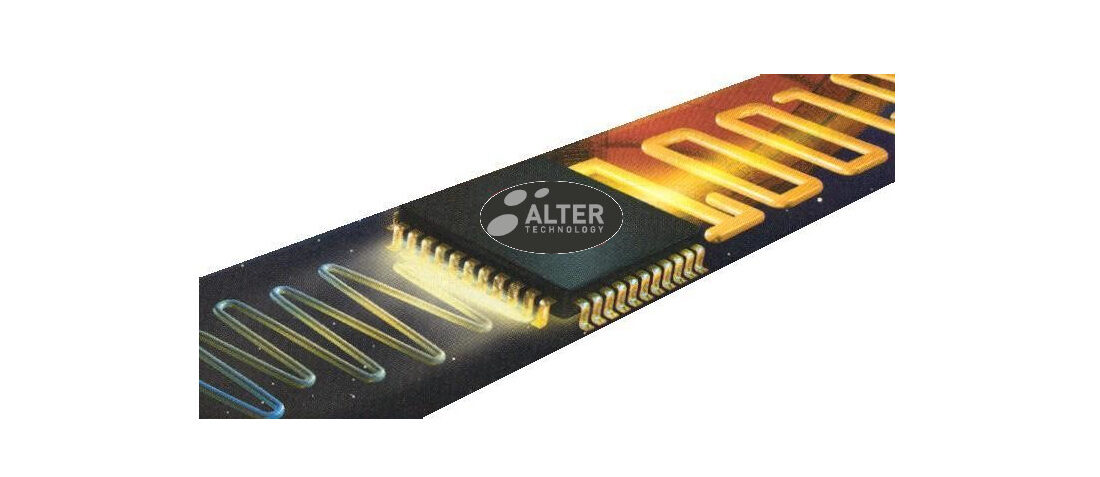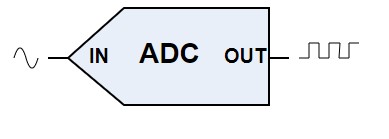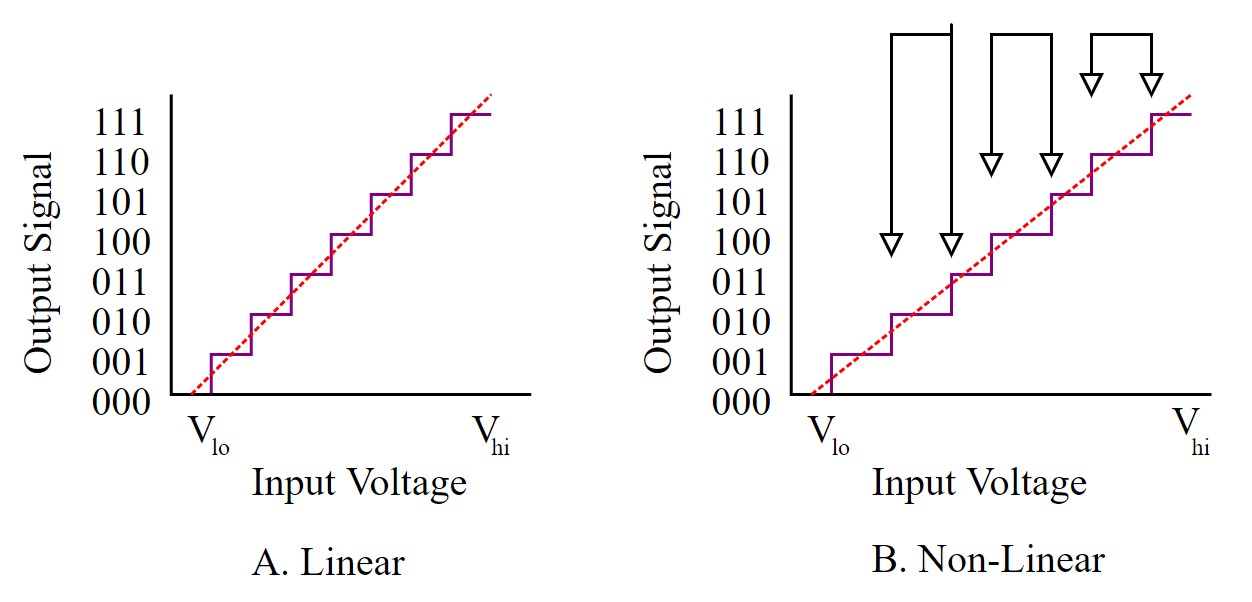
Data conversion: The other side of coin
- Posted by José Francisco Largaespada
- On September 3, 2019
- 0
We recently posted an entry comparing different DAC (digital to analog converter) for space applications. As we explained, DAC’s are extremely important in any satellite electronic design. However, DAC’s are just one side of the data conversion step. The other side, the one that transform an analog signal into digital data is covered by the Analog to Digital Converters (ADC’s).
Many of the measurable environmental physical parameters are in an analog form, like height, sound, light and temperature. Temperature is indeed an example of great interest in space applications, because some equipment in satellites need to be carefully monitored in terms of temperature. In order to do this, a temperature monitoring system is used, in which sensors take measurements of the temperature.
However, if we would like to use computers to analyze these data, we would be unable to do this directly. We need to transform this analog data into digital data that the microprocessors and microcontrollers can handle.

What should I look to when using an ADC?
ADC’s are fairly complex devices, with many different parameters, dynamic characteristics and several configurations. In order to reduce this great amount of information, we will summarize below several important characteristics that need to be considered when using an ADC:
- ADC Architectures: there are several possible architectures for ADC’s, each one with its advantages and disadvantages and therefore suitable for some specific applications
- Flash converters: these are the fastest converters, and the simplest. The drawback is that they consume a lot of power and they are usually limited to 8-bits (low resolution).
- Integrating ADC’s: if the application needs high resolution and a strong immunity against noise, integrating ADC’s are ideal. As it always happens in ADC’s this increasing resolution results in lower sampling rates, so they must be used in slow conversion applications.
- Delta-Sigma converters: they are based in integrating ADC’s. They give up speed for resolution, being this architecture used in 16-24 bits ADC’s.
- SAR converters: suitable for medium or high-resolution applications. In terms of conversion speed, are between integrating and flash converters. This architecture is one of the architectures that gives more flexibility, and several resolutions, speeds and other characteristics are available
- Pipeline: as Delta-Sigma ADC’s, pipeline devices also sacrifice speed for resolution (but they do not reach as high resolution as Sigma-Delta).
- Relevant parameters: for all analog-to-digital converters, we present several important parameters
- Resolution: it is easily represented by the number of bits available at the output (digital side). It defines how many discrete digital values are available, and therefore also stablishes the minimum change in the analog input to cause a change in the digital output (this is called Least Significant Bit, or LSB)
- Sampling rate: this parameter measures the frequency at which new digital values are “sampled” from the analog input
- Signal to noise ratio (SNR): it is the relation between the output signal voltage and the output noise. This means that higher SNR is related to a better performance.
- Differential non-linearity (DNL) and integral non-linearity (INL): these two parameters are important because the measure the non-linearity (deviations from the ideal behavior) of the ADC. The DNL measures how far to adjacent codes are, and INL indicates how different the actual transfer function is from the ideal. (see below figures, A: Differential Linearity where a change in the input produces a corresponding change in output. B: Diffential Non-linearity, where the relationship is not directly linear). The INL can be interpreted as a sum of DNL’s

There are some other relevant parameters such as power consumption, offset error (deviation from the ADC’s transfer function from the perfect ADC at the point of zero to the transition measured in the LSB bit), and others relevant to the design in the specific equipment, such as the package
Speaking now about ADC’s for space applications, the availability of Analog to Digital Converters for space applications is higher than the availability of DAC’s (Analog Devices: 14 ADC’s against 7 DAC’s; Texas Instruments: 14 ADC’s against 3 DAC’s; and so on), which gives designers a bit more of flexibility. Due to the different characteristics in the ADC’s available, we show below a comparison between two of the most used ADC’s in space applications, because of their 8 channel flexibility
| wdt_ID | Part Number | Resolution | Sampling Rate | SNR (dB) | DNL (INL) (LSB) | Radiation | Power (mW) |
|---|---|---|---|---|---|---|---|
| 1 | ADC128S102QML-SP (Qualified against 5962-07227, FP-16 and DIE versions) | 12 | 50 KSPS to 1 MSPS | 72 | +1.5/−0.9 (+1.4/−1.25) | TID:100 Krads (Si). HDR (50-300 rad/s) only (full CMOS technology) SEL: 120 MeV·cm2/mg SEFI: 120MeV·cm2/mg | 2.3 |
| 4 | RHFAD128 (Qualified against 5962-18204, FP-16 and DIE versions) | 12 | 50 KSPS to 1 MSPS | 71 | 0.9 / -0.9 (-1.1 / 1.1) | TID:300 Krads (Si). HDR (50-300 rad/s) only (full CMOS technology) SEL: 125 MeV·cm2/mg SEFI: 62 MeV·cm2/mg SEU: 32 MeV.cm²/mg | 1.65 mA typ.@ 3.6 V |
These are just two examples because of the extensive use of this type of ADC, but there are more examples: resolutions ranging from 8 bits (for example AD670S and ADC08D1520QML-SP) to 20 bits, from several KSPS to some high speed (hundreds of MSPS) and many more options.
Photos Resources: ADC Symbol, Differential linearity
- Plastic RT PWM and FET Driver from Renesas for New Space - June 5, 2022
- Component Selection in New Space Applications - July 2, 2021
- Product Assurance Plan for Small Sats - July 1, 2021

0 comments on Data conversion: The other side of coin